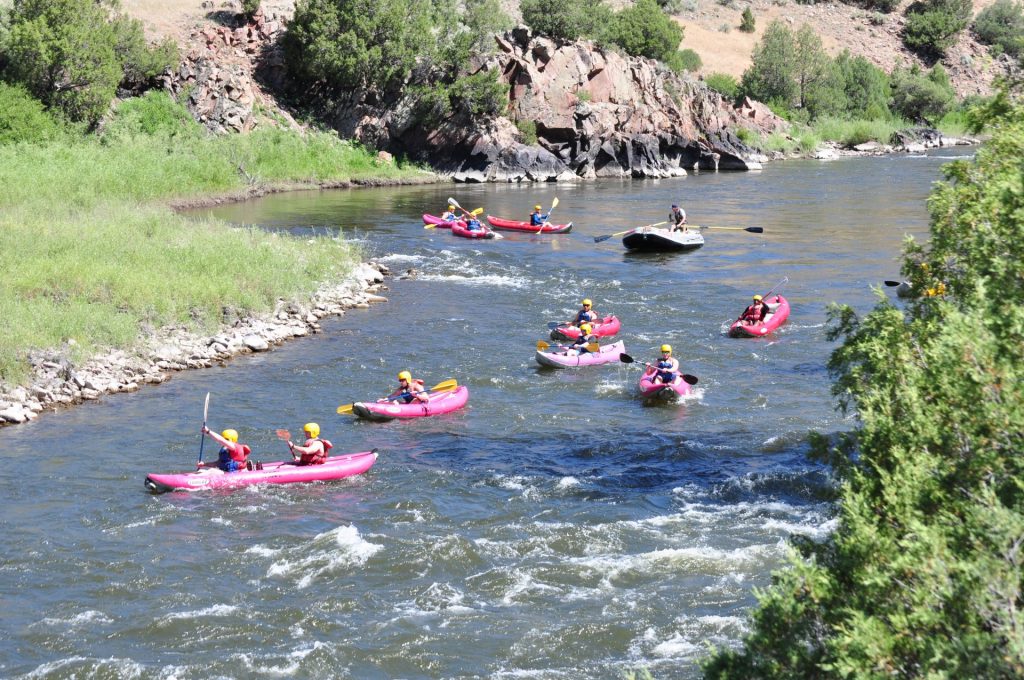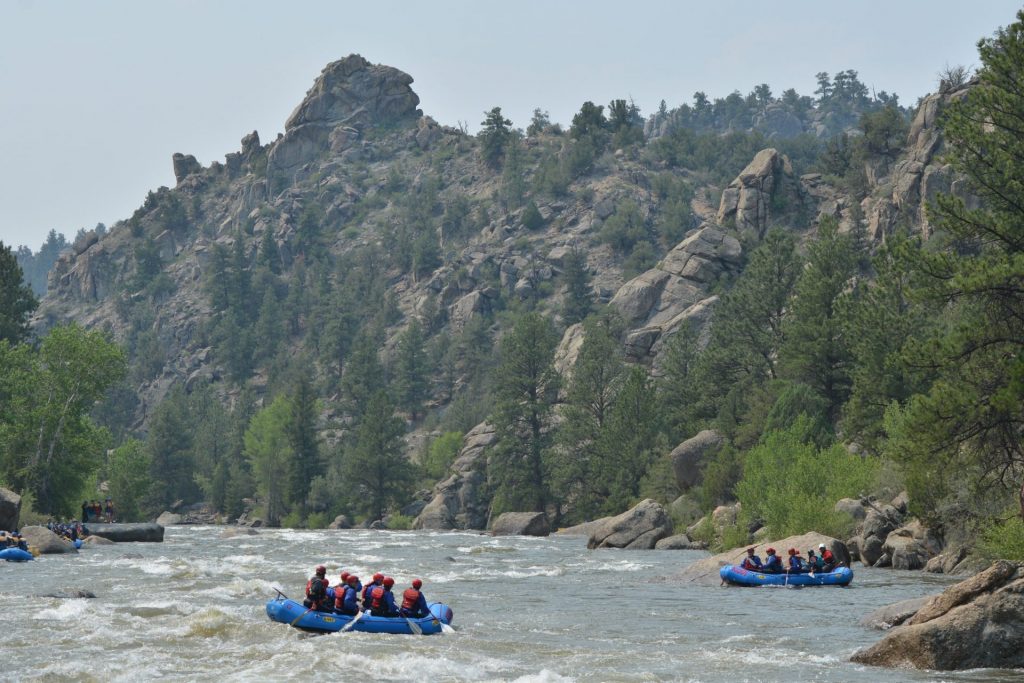Whitewater rafting is the perfect activity if you want to try something new and exciting. The thrill of riding down a river in the company of friends or family and a professional guide will make your trip memorable and fun!
Is whitewater rafting scary? As long as you follow your guide’s instructions, you can look forward to a safe, and fun adventure. From making travel arrangements to packing the proper gear, KODI is here to assist you. In this raft beginner’s guide, we’ll discuss everything you need to know to get comfortable.
Getting Started: The Class System
The International Scale of River Difficulty is a helpful tool for identifying the difficulties in rivers worldwide. It does not always work perfectly because some parts of a river can be different from others, and water levels and flow rates change daily with seasons and climate. That said, let’s look at how hard whitewater rafting is depending on the rapids.
Class I – Calm, deep currents ensure safety as long as one stays clear of rocks and other debris.
Class II – With straightforward rapids, this is considered the novice class, where everything is easy to navigate as long as you know what you’re doing.
Class III – This class is intermediate because it takes skill and experience to successfully maneuver through complex river sections while dealing with currents faster than lower classes.
Class IV – This class requires precise paddling skills since one encounters unavoidable rapid waves, holes, and constrictions. Remember that this class is always intense and powerful.
Class V – Requires high expertise and extreme endurance and not runnable by commercial rafters.

Whitewater Rafting Tips
Here are some whitewater rafting tips you should know before hitting the river:
- Study the river you’ll be rafting on. Rocky mountain rivers can be unpredictable, so it’s important to know what you’re getting into.
- Always heed your rafting guide and follow their instructions. They’re there for a reason.
- Enjoy yourself! The point of whitewater rafting is to have fun, so keep your inexperience from getting in your way. You can make even your first time a memorable experience.
Whitewater Rafting Clothing Tips
One of the most important tips for whitewater rafting is to dress appropriately. The KODI team will equip you with a Personal Flotation Device (PFD), a helmet, a wetsuit, neoprene booties, and/or a splash jacket depending on the weather conditions that day. And don’t forget your sunscreen, sunglasses (with safety leash!), and a hat that fits under the safety helmet to protect you from the sun!
Whitewater Rafting Safety Tips
Whether you are a first-timer or an experienced rafter, whitewater rafting can be an exciting and thrilling experience. However, it’s important to follow whitewater rafting safety tips. At KODI Rafting, we make sure that our guests are accompanied by a licensed and certified rafting guide with proper training, while dressed and equipped appropriately for the day.
Key Terms to Know
For those whitewater rafting for the first time, here are a few fun terms to learn:
- Put in: This is the starting point of your rafting trip where the raft enters the river
- Take out: Ending point of a river rafting adventure where the raft gets loaded on a trailer and you leave the river
- River left/river right: These are directions a rafting guide gives while you’re rafting. Always note that these are the directions you will use while maneuvering down stream while looking downstream
- Eddy: an area of the river with current different from the main river current, frequently on the edge of the river after an obstruction (like a boulder) and with a light whirling motion, which is a great place to “pull over” in the raft to wait for other boats to catch up, or “eddy out”
- Boil: Where the water surface looks like boiling water, usually caused when water is being forced into one loacation, often appearing at the bottom of rapids where fast moving water is flowing into slower moving water that is pooled
- Swimmer: Individual who fell out of the raft during a rafting trip
- Flip: Used when a raft has completely overturned
- Safety kayak(er): Individuals accompanying rafts in kayaks who support swimmers or groups, usually following a group of rafts
- Portage: Term used to describe a team carrying a raft around a river obstacle on the shore to avoid a specific section of the river
- Broach: Used to indicate that a boat has its broadside facing downstream

More Safety Tips
So, is whitewater rafting hard? The perceived difficulty level depends on the river conditions, your physical strength, and your comfort level. If you’re a beginner, starting with a calmer river is likely best since you can work your way up as your skill level progresses. That said, here are some specific first-time whitewater rafting tips:
- Always hold the raft paddle properly – the paddle is the most common source of injury
- Ensure your PFD (personal flotation device) and helmet fit properly and are tightened down so they don’t slip or come off
- Stay in the boat at all times when you’re on the water unless the group is specifically going to shore and your guide recommends getting out on shore
- Learn various the various self-rescue techniques your guide recommends in the pre-trip safety talk so you’re able to get to safety in the unlikely event you fall overboard
- Know the commands and key terms to communicate effectively from your guide
- Stay aware of your surroundings at all times
- Never try to stand up in a river – your feet can get caught between rocks and injur your ankle or leg
- Always listen to your raft guide
- Don’t panic, you’re in safe hands!
Let’s Go Rafting!
Now that you know the basics of whitewater rafting, you’re ready to hit the river! And our staff and guides will be there for you every step of the way. All of our specialists complete a special whitewater rafting training course at KODI Rafting here in Colorado with skills assessments and instruction both on and off the river. They’re there to help ensure you have a safe and fun experience on the water.
Always remember: when in doubt, ask your Colorado rafting guide.
